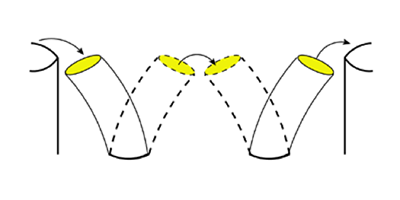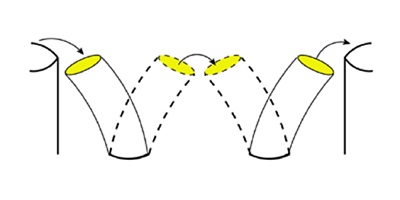An Electron Bucket Brigade
From piezoelectric shoes to bouncing backpack dynamos, harvesting energy from ambient motion is a hot topic. But schemes based on generators made from vibrating nanolevers require that the frequency of the input motion be precisely matched to that of the harvester. Slight deviations from the optimum frequency cause drastic reductions in power output. Chulki Kim, of the Korea Institute of Science and Technology in Seoul, and colleagues discuss in Physical Review Letters their studies with nanopillars—slender vertical rods that wave back and forth in response to motion. These nanopillars can act like shuttles that carry electrons from one electrode to another, like a fire brigade organized to move water from source to destination.
The nanoscopic harvesters studied by Kim et al. consist of two -nanometer-diameter silicon rods standing nanometers high and topped with gold discs. If the rods are properly driven so that the pillars alternately touch and separate, they can move electrons between electrodes on either side of the rods. To test these ideas, the authors apply radio-frequency driving voltages and measure the direct current output of the shuttles, varying the input frequency to map out the response.
Kim et al. observe that when they apply enough input power to drive the system into nonlinear behavior, the pillars can lock onto a wide range of input frequencies so that the dc current generation is strong and broadband. The scheme could open the way to harvesting electricity from waste heat generated by high-power microprocessors. The researchers conclude that if fabricated into large arrays, the coupled nanopillar shuttles could improve the power output of such harvesting systems by several orders of magnitude. – David Voss





